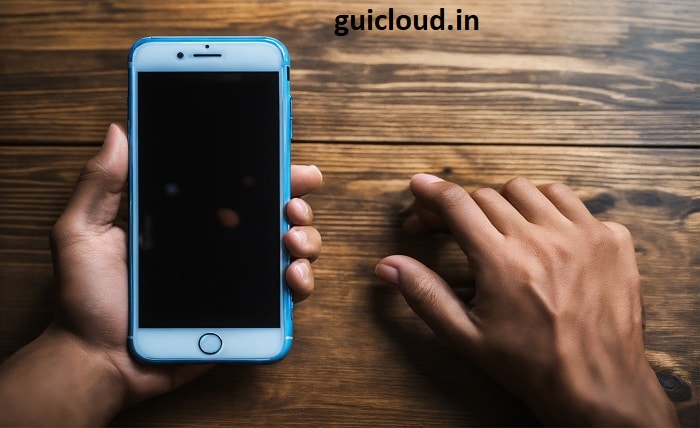Effortlessly Move iCloud Contacts to Gmail: A Step-by-Step Guide

In today’s digital age, managing contacts efficiently across different platforms is essential for seamless communication. Many users find themselves needing to move iCloud contacts to Gmail when switching from an iPhone to an Android device or when consolidating their contacts for better management. Understanding how to move iCloud contacts to Gmail ensures that you retain all your important connections without any hassle. This comprehensive guide explores various methods to transfer your contacts, providing you with the knowledge and tools to make the switch effortlessly. Whether you’re a tech novice or a seasoned user, learning how to move iCloud contacts to Gmail will enhance your contact management experience.
Why Move iCloud Contacts to Gmail?
There are several compelling reasons why you might want to move iCloud contacts to Gmail. Gmail offers a robust contact management system that integrates seamlessly with other Google services, providing enhanced functionality and accessibility. By transferring your contacts to Gmail, you can benefit from features like easy syncing across multiple devices, advanced search capabilities, and reliable backup options. Additionally, moving iCloud contacts to Gmail can facilitate better collaboration and sharing, especially if you rely heavily on Google Workspace tools for your personal or professional needs. Understanding why move iCloud contacts to Gmail can help you make an informed decision to optimize your contact management strategy.
Preparing to Move iCloud Contacts to Gmail
Before you begin the process of moving iCloud contacts to Gmail, it’s crucial to prepare adequately to ensure a smooth transition. Start by backing up your contacts to prevent any data loss during the transfer. Verify that your iCloud contacts are up-to-date and organized, eliminating any duplicates or outdated entries. Additionally, ensure that you have a stable internet connection and access to both your iCloud and Gmail accounts. Familiarizing yourself with the export and import procedures will also make the process more efficient. Proper preparation is key to successfully moving iCloud contacts to Gmail without encountering issues.
Exporting Contacts from iCloud
One of the primary steps to move iCloud contacts to Gmail is exporting your contacts from iCloud. Begin by visiting iCloud.com and signing in with your Apple ID. Click on the Contacts icon to access your contact list. Select the contacts you wish to transfer by clicking the gear icon in the lower-left corner and choosing “Select All” or manually selecting specific contacts. After selecting the contacts, click the gear icon again and choose “Export vCard.” This action will download a .vcf file containing all your selected contacts, providing a portable format that can be easily imported into Gmail. Exporting contacts from iCloud is a straightforward process that forms the foundation for moving iCloud contacts to Gmail.
Importing Contacts to Gmail via Google Contacts
Once you have exported your contacts from iCloud, the next step in moving iCloud contacts to Gmail is importing them into Google Contacts. Open Google Contacts in your web browser and sign in with your Gmail account. On the left sidebar, click on “Import” and then select “Select file.” Choose the .vcf file you previously exported from iCloud and click “Import.” Google Contacts will process the file and add all your contacts to your Gmail account. This method ensures that your contacts are now available in Gmail, synchronized across all your devices linked to your Google account. Importing contacts to Gmail via Google Contacts is an essential step in moving iCloud contacts to Gmail effectively.
Using iCloud to Gmail Sync Tools
For users who prefer an automated approach, several third-party tools and applications can facilitate moving iCloud contacts to Gmail. Tools like “CopyTrans Contacts” or “Contacts Sync for Google Gmail” offer streamlined processes to sync your iCloud contacts directly with Gmail. These tools typically require you to download and install the software on your computer, connect both your iCloud and Gmail accounts, and follow the on-screen instructions to initiate the sync. Using iCloud to Gmail sync tools can save time and reduce the manual effort involved in transferring contacts, making how to move iCloud contacts to Gmail more convenient for users who prefer a hands-off approach.
Using Mobile Apps to Transfer Contacts
Another efficient way to move iCloud contacts to Gmail is by using mobile applications designed for contact transfer. Apps like “Move to iOS” for Android or “Sync. ME” can help you migrate your contacts seamlessly. To use these apps, download and install the chosen app on your mobile device, grant the necessary permissions, and follow the instructions to link your iCloud and Gmail accounts. These apps often provide step-by-step guidance to ensure that your contacts are transferred accurately and securely. Utilizing mobile apps for contact transfer offers a user-friendly alternative for those who prefer managing the process directly from their smartphones.
Troubleshooting Common Issues When Moving iCloud Contacts to Gmail
While moving iCloud contacts to Gmail is generally straightforward, you might encounter some challenges along the way. Common issues include incomplete contact transfers, duplicate entries, or errors during the import process. To troubleshoot these problems, first, ensure that you have a stable internet connection and that both your iCloud and Gmail accounts are properly synced. If you experience incomplete transfers, try exporting the contacts again and verify that the .vcf file includes all your contacts. For duplicate entries, use Google Contacts’ built-in merge feature to consolidate repeated contacts. Additionally, ensure that your .vcf file is not corrupted and that it adheres to the proper formatting standards. Addressing these common issues will help you successfully move iCloud contacts to Gmail without data loss or discrepancies.
Best Practices for Managing Contacts After Transfer
After successfully moving iCloud contacts to Gmail, adopting best practices for contact management can help maintain an organized and efficient contact list. Start by regularly updating your contacts in Google Contacts to reflect any new additions or changes. Utilize labels and groups within Gmail to categorize your contacts for easier access and better organization. Additionally, take advantage of Google Contacts’ features such as duplicate detection and merge to keep your contact list clean and free from redundancies. Periodically back up your Gmail contacts to an external file or another cloud service to safeguard against accidental loss. Implementing these best practices ensures that your contacts remain well-organized and accessible, enhancing the overall effectiveness of moving iCloud contacts to Gmail.
Security Considerations When Moving iCloud Contacts to Gmail
Ensuring the security of your contact information is paramount when moving iCloud contacts to Gmail. Always use secure connections, such as HTTPS, when accessing iCloud and Gmail to prevent unauthorized access to your data. When exporting and importing contacts, handle the .vcf files with care to avoid exposure to sensitive information. Consider enabling two-factor authentication (2FA) on both your iCloud and Gmail accounts to add an extra layer of protection. Additionally, be cautious when using third-party tools and apps for contact transfer; only use reputable services that prioritize data security and privacy. By adhering to these security measures, you can confidently move iCloud contacts to Gmail while safeguarding your personal information.
Automating the Contact Transfer Process
For those who frequently update their contacts or manage multiple devices, automating the process of moving iCloud contacts to Gmail can save significant time and effort. Automation can be achieved through the use of synchronization tools and services that continuously sync your iCloud contacts with Gmail. Services like “Zapier” or “IFTTT” can create automated workflows that transfer new contacts from iCloud to Gmail as they are added. Additionally, some third-party apps offer real-time sync capabilities, ensuring that your contacts remain consistent across both platforms without manual intervention. Implementing automation in how to move iCloud contacts to Gmail enhances efficiency and ensures that your contact list is always up-to-date.
Leveraging Google Workspace for Contact Management
If you’re using Google Workspace, leveraging its advanced contact management features can enhance the process of moving iCloud contacts to Gmail. Google Workspace offers centralized management of contacts, allowing for better organization and collaboration within teams. By importing your iCloud contacts into Google Workspace, you can take advantage of features like shared contacts, contact sharing across multiple accounts, and enhanced security settings. Additionally, Google Workspace integrates seamlessly with other Google services, providing a unified ecosystem for managing your contacts and other essential data. Utilizing Google Workspace for contact management simplifies how to move iCloud contacts to Gmail and optimizes your overall productivity.
Conclusion
Transferring contacts is a critical step when switching from iPhone to Android or when seeking a more versatile contact management system. Understanding how to move iCloud contacts to Gmail ensures that you retain all your essential connections without losing valuable information. Whether you choose to export and import contacts manually, use third-party tools, or leverage mobile apps, this guide provides multiple methods to suit your preferences and technical comfort levels. By following the outlined steps and adhering to best practices, you can achieve a seamless and efficient transfer of your contacts from iCloud to Gmail. Embrace the enhanced functionality and organization that Gmail offers, and keep your contacts accessible and well-managed across all your devices.
FAQ
1. Can I move iCloud contacts to Gmail without losing any data?
Yes, you can move iCloud contacts to Gmail without losing any data by carefully following the export and import steps. Ensure that you export all contacts from iCloud as a .vcf file and verify the file’s integrity before importing it into Google Contacts. Using reliable methods and tools will help maintain the completeness and accuracy of your contact information when moving iCloud contacts to Gmail.
2. Do I need a computer to move iCloud contacts to Gmail?
While using a computer provides a straightforward method to move iCloud contacts to Gmail through exporting and importing vCard files, it is not the only option. Mobile apps and third-party tools can facilitate the transfer directly from your smartphone, allowing you to move iCloud contacts to Gmail without the need for a computer.
3. How long does it take to move iCloud contacts to Gmail?
The time required to move iCloud contacts to Gmail depends on the number of contacts and the method you choose. Manually exporting and importing a .vcf file typically takes about 10-20 minutes. Using third-party tools or mobile apps may streamline the process further, potentially reducing the time needed.
4. Will moving iCloud contacts to Gmail sync them automatically in the future?
By default, moving iCloud contacts to Gmail does not create an automatic sync between the two platforms. However, using third-party synchronization tools or setting up automated workflows with services like Zapier or IFTTT can enable continuous syncing, ensuring that your contacts remain updated across both iCloud and Gmail.
5. What should I do if some contacts are missing after moving from iCloud to Gmail?
If some contacts are missing after moving iCloud contacts to Gmail, first check the exported .vcf file to ensure all contacts were included during the export process. If the file is complete, try re-importing it into Google Contacts. Additionally, review any filters or settings in Google Contacts that might hide certain contacts. If the issue persists, consider using a third-party tool to facilitate a more comprehensive transfer.




